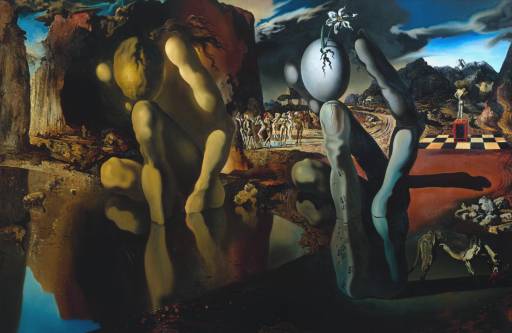Can you teach me to be Creative?

‘Can you teach us to be creative?’ They pleaded. ‘Where do you get inspiration from..?’
You may have read elsewhere on the blog that I run a series of one- and two-day courses here at Earth Designs on a variety of garden design related subjects. This week I held a three day course for my 2 regular students from Babylons Hager in Norway. They have visited many times before to study various aspects of Garden Design and Landscape Build here at Earth Designs in London. This time they came to do a creative course and get those juices flowing.
I was began thinking visually at a young age. I grew up in an environment surrounded by niknaks and object d’art. The Antiques Roadshow was obligatory in our house, and by the age of 10 I had a deep rooted interest in all things vintage from across the arts, including decorative arts. So it came as no surprise when I chose Creative Arts for my degree.
Art and Design has always been part of my DNA. Don’t ask me to add up, or understand anything scientific, as I will crumble… but ask me about colour, form, line, shape and I am in my comfort zone. Don’t get me wrong, I am by no means an expert, but it is something in me, something instinctive, so I imagined that pulling out my creative spark, analysing it and imparting it to students from the ground up should be something that I would find easy… Wrong!
Given I have a degree in Art, and have been in the design industry for over 15 years, this should be the area I feel most confident in, but when you try to teach someone in 3 days the secret of ‘how to be creative’ it is not so easy.
So where to start? I emailed the students a design quiz to try and understand their knowledge and background on design and how much they knew about art movements and trends. I think they would agree that their comprehension of anything design related was not good, so it appeared we were headed back to basics.
I decided the best thing to do was a crash course in Art History and the decorative arts – simple… or not!
Figuring they may have some knowledge of history and that the 20th century might present less of a challenge, I decided to focus on this period. To condense the social, economical and political impact history has had on the world of art and design its not easy. Meeting at the Tate Modern, we had a coffee and explored a timeline of art history from about 1880 to present day. Wrinkled brows and bemusement aside we began to embark on their first ever visit to an art gallery, starting with ‘Poetry and Dream – Surrealism and Beyond.’ I tried to fumble my way through explaining Marcel Duchamp’s urinal and Joan Miro
Salvador Dali’s 1937 ‘Metamorphosis of Narcissus’ should be a winner I thought but i had ‘pushed 2 non swimmers in at the deep end without armbands’. Kari Mette commented frequently how ‘she could do that..’ They focussed on the aesthetics of the pieces, and had difficulty understanding the concepts behind Modern Art, how it should be viewed in terms of the social, economic and artistic context it was born from. Monet’s water lilies raised a smile and so did Marguerite Kelsey 1928, Meredith Frampton 1894-1984 but not because they understood Realism, more because they could tell what it was.
I was losing them – we needed to employ a different tack. Time to get the drawing books out and step things up a notch. So off we went to explore further. ‘Pick one. Any one,’ I said. ‘We will be drawing a garden design inspired by the picture you choose.’ They weren’t convinced. So I chose something easy (I thought), something they can interpret literally. As I turned the corner the perfect piece presented itself: Perspex Group on Orange (B) 1969 by Mary Martin.
‘Come along,’ I bustled in my best school ma’am voice. A quick photo to remind ourselves of the piece later, then pens at the ready we held our noses and jumped in. They swam… boy did they swim. They both sat, totally absorbed in the task, looking at the piece and back at their paper whilst they immersed themselves in the garden that was leaping from their imaginations onto the page. They were somewhere else, they didn’t look round, speak to each other or get distracted in any way. And when they emerged – wow, what faces, what smiles!
After lunch I felt Energy and Process (one of the galleries themes) needed to be imitated in life, (“Life imitates Art far more than Art imitates Life” – Oscar Wilde) and sought to infuse the rest of the day with energy and progress. We headed off to Level 5. Kari Mette was now into Cubism and revelled at George Braque, whilst Wenche was browsing at the Lichtenstein (or wow pow man as he became known). Andy Warhol brought a smile as they had heard of him and had had a photo taken of themselves somewhere in a Warholesque manner. More drawing, discussion, history, exploration, a bit more drawing, theming, rationalising and a bit more drawing, and the day came successfully to an end.





